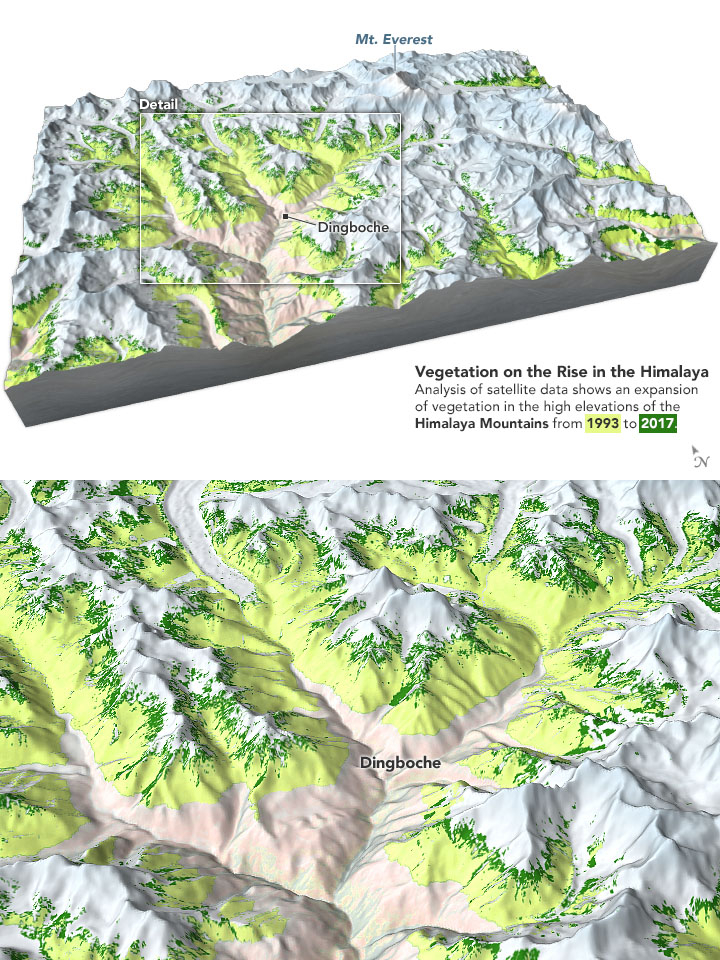Publié le 12 janvier 2022
The landscape made her wonder: “Is there more plant coverage now than in the past?” The question seems simple, but the answer has complex and important implications for the region’s water cycle. Research in other parts of the world has shown that changes in the type and expanse of vegetation can lead to changes in the flows and stores of water. So, an expansion of plants in the Himalaya—not just the retreat of glaciers—could affect the water supply for one fifth of Earth’s human population.

1993 – 2017
But how this plant-water relationship will play out remains unclear. “There is such a lack of information about Himalayan ecology in this high-altitude zone, at least in western science, that we don’t really understand what the impacts of changing vegetation will be,” Anderson said. “Most of the scientific expeditions to the Himalaya have been to the glaciers, which have been an area of major concern as they retreat under climate change.”
Anderson and colleagues set out to evaluate how plant life has changed in the Hindu Kush Himalaya over the span of 26 years. They focused on elevations above the tree line but below permanent snow and ice. In this area, known as the subnival or alpine zone, you can find shrubby plants and seasonal snow. In the Himalaya, the zone generally includes altitudes between 4,100 to 6,000 meters (13,000 to 20,000 feet) above sea level.